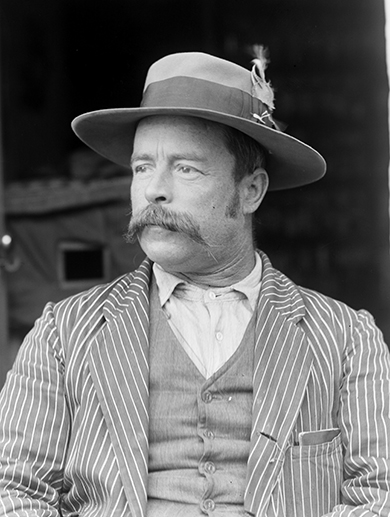Francis James Gillen and Walter Baldwin Spencer amassed what is perhaps the most influential collection of Australian ethnographic material ever assembled. Their work had a decisive influence on the early development of anthropology, particularly in Europe.
Gillen and Spencer developed their collection at a time when Aboriginal people in Central Australia were relatively unaffected by European contact (between 1875 and 1912) and as such constitutes one of the most comprehensive inventories of a regional Aboriginal group in existence.
Legacy
Their extensive collection and published works continue to shape the production of knowledge about past and present Aboriginal life in both anthropology and the popular imagination. Just as importantly, it also provides an invaluable cultural archive for the descendants of the Aboriginal people with whom Spencer and Gillen worked in Central Australia; the Arrernte, Anmatyerr, Kaytetye, Warumungu, Luritja and Arabana people who still have a substantial presence in the region.
The various elements of the collection are currently located in a number of institutions, both in Australia and overseas. Despite its undeniable significance, the material gathered by Spencer and Gillen has never been fully integrated into a single catalogue, and is now dispersed across the institutions listed above.
Influence
One of the foundational figures of modern sociology, Emile Durkheim, based his famous tome, The Elementary Forms of Religious Life on Spencer and Gillen's ethnography. Similarly, Sigmund Freud’s, Totem and Taboo, was primarily inspired by Gillen and Spencer’s and work on Aboriginal religious belief.
Timeline
- 1875
- Gillen is stationed at the Charlotte Waters Telegraph Station, South Australia.
- 1886
- Gillen publishes a Lower Arrernte wordlist in E.M. Curr’s The Australian Race
- 1887
- Spencer arrives in Melbourne for an appointment as foundation chair of biology at the University of Melbourne
- 1892
- Gillen appointed Alice Springs Post and Telegraph Stationmaster
- 1894
- Spencer travels to Alice Springs as a member of the Horn Scientific Expedition (between May 5th – August 7th) and meets Gillen, Telegraph Station master
- 1896
- Spencer travels to Alice Springs to work with Gillen documenting the Engwura (Angkwerre) ceremonies during the summer of 1896/7
- 1899
- Gillen transferred to Moonta, South Australia. The Native Tribes of Central Australia is published
- 1901-02
- Spencer and Gillen work on the Spencer and Gillen Expedition (travelling by horse and buggy from Oodnadatta to Borroloola)
- 1903
- Spencer and Gillen travel together to Peake Station in South Australia and spend three weeks researching Arabanna people for their forthcoming publication.
- 1904
- The Northern Tribes of Central Australia is published
- 1912
- Gillen dies from a neurological disorder
- 1912
- Across Australia is published with Gillen as co-author
- 1927
- The Arunta is published with Gillen as co-author
- 1929
- Spencer travels from London to Tierra del Fuego to conduct anthropological work with the Yahgan population. On the 14th July Spencer dies from angina pectoris on Navarino Island, Chile.

